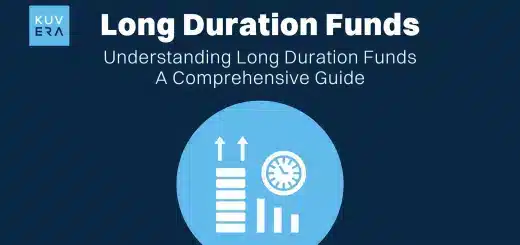Is FINNIFTY a closer sounding term to Nifty? Let’s find out what FINNIFTY is.
Imagine having a financial GPS that tracks the top players in the industry, giving you a clear view of how India’s financial sector is faring. The Finnifty Index can be your go-to resource for just that.
Start investing in Index Funds.
Let us delve a little deeper to understand more about FINNIFTY, a new player in the field of stock market investing.
The NSE launched the Nifty Financial Services Index (FINNIFTY) in January 2021. It was formed to gauge the performance of financial sector components in India. The FINNIFTY index includes up to 20 leading firms in the financial sector listed in NSE under NIFTY 500 and is updated every six months. Investors can benefit from FINNIFTY by investing through ETFs or Exchange Traded Funds, Index Mutual Funds and Futures and Options (F&O) Contracts.
What Does FINNIFTY Measure?
A major component of FINNIFTY is banks with the top 3 being HDFC, ICICI, and Kotak Mahindra contributing about 63%. Housing finance constitutes 18.5% and the other sectors like insurance companies, NBFCs and others represent the rest of the mix.

Source: Compiled from the NSE website on 19 Aug, 2024
How are Stocks Selected to be Included in FINIFTY?
- Eligibility criteria: Companies from the finance sector included in the NIFTY 500 are considered for the FINNIFTY Index.
- Composition: Each sub-sector is included in the index based on its median free-float market capitalisation to ensure that the weight is proportionate to its market value, providing a balanced representation of the finance sector.
- Selection: Companies listed on the NSE’s futures and options segment are prioritised due to their higher liquidity and trading activity. To be included, a company’s average free-float market capitalisation must be at least 1.5 times that of the smallest company in the index. This requirement ensures that only companies with significant market presence are included. Free float is calculated as follows:
Free-float market capitalisation = Shares outstanding x Price x Investible weight factors
Component mix: The combined weight of the top three stocks is limited to 62%, and no single stock can account for more than 33% of the total index weight during rebalancing. These restrictions help prevent excessive concentration and encourage greater diversification within the index.
Current FINNIFTY includes the following top financial sector entities:
| Major entities constituting 85.12% | ||||
|---|---|---|---|---|
| AXIS Bank 6.41% | Bajaj Finance 8.54% | Bajaj Finserv 5.19% | HDFC Bank 22.33% | HDFC Life 2.56% |
| ICICI Bank 14.89% | SBI 13.28% | Kotak Mahindra Bank 6.92% | SBI Life Insurance 2.42% | Power Finance 2.58% |
| Other entities constituting 14.88% | ||||
| REC | Cholamandalam | Shriram Finance | Muthoot Finance | ICICI Prudential Life Insurance |
| ICICI Lombard | IDFC | LIC Housing Finance Ltd | HDFC Asset Management | SBI Cards |
How did the Index Perform Over 12 Months?
| Date | Price | Vol. | Change % |
|---|---|---|---|
| Aug 01, 2023 | 19,597.65 | 3.27B | -3.66% |
| Sep 01, 2023 | 19,811.10 | 2.93B | 1.09% |
| Oct 01, 2023 | 19,204.60 | 1.97B | -3.06% |
| Nov 01, 2023 | 20,054.65 | 2.27B | 4.42% |
| Dec 01, 2023 | 21,487.45 | 2.82B | 7.15% |
| Jan 01, 2024 | 20,497.50 | 3.30B | -4.61% |
| Feb 01, 2024 | 20,407.90 | 2,736.42B | -0.44% |
| Mar 01, 2024 | 20,989.10 | 2,619.27B | 2.85% |
| Apr 01, 2024 | 21,841.15 | 2,485.79B | 4.06% |
| May 01, 2024 | 21,718.30 | 1,909.55B | -0.56% |
| Jun 01, 2024 | 23,420.30 | 3.53B | 7.83% |
| Jul 01, 2024 | 23,412.20 | 2.87B | -0.03% |
| Aug 01, 2024 | 23,109.95 | 1.17B | -1.29% |
Rebalancing of FINNIFTY
Every six months on cut-off dates January 31st and July 31st, the FINNIFTY index goes through a rebalancing, something like a makeover process to maintain the selection and weighting criteria. We can use the average data from the past six months to make these decisions, and give everyone a four-week heads-up before making any dramatic changes.
The index gets another shake-up every quarter, in March, June, September, and December, to make sure it’s still on point. Stocks that don’t quite make the cut get replaced by fresh, eligible contenders. The National Stock Exchange (NSE) maintains the index and makes sure that changes are informed in advance to enable market participants to adjust their stock market investing strategies accordingly.
| Advantages | Disadvantages |
|---|---|
| Diversification and risk reduction By investing in a few different companies, you can spread out your risks. This is the crux of smart portfolio-building. | Concentration risk With just 20 stocks in the NIFTY Financial Services Index, it's like having a tiny party where everyone’s a VIP. If a few stocks perform poorly, it can significantly impact the overall performance of the index. |
| Sectoral bet If you’re optimistic about the entire finance sector, rather than just banking, you now have a benchmark that fits your vision better. You can now create ETFs, index funds, and option trading strategies based on a benchmark that provides a more comprehensive view of the entire financial industry, beyond just the Nifty Bank. | Limited exposure to small-cap companies The NIFTY Financial Services Index is all about the big players. Investors looking for diversification by investing in small or medium cap stocks may need to invest in other indices. |
| Historical performance Since its inception in 2021, the index has yielded returns of 17.54% p.a. compared to roughly 11% p.a. of Nifty 50 and 18.85% p.a. of the Nifty Bank index. | Heavy reliance on a few sectors Finnifty is heavily weighted towards the financial sector, so its performance closely tracks the ups and downs of this sector. This means that if the financial sector has a significant change, it can greatly impact the overall index. Investors seeking more diversification might want to look at other indices or individual stocks to balance their portfolios. |
| Lower Costs Trading index derivatives can be more cost-effective compared to buying individual stocks. | Regulatory impact Regulatory changes or government policies impacting the financial sector can have a significant impact on Fin Nifty's performance, potentially leading to unexpected losses for investors. |
| Benchmarking FINNIFTY serves as a benchmark for the financial sector, supporting performance assessment and asset allocation. | Rebalancing Impact Periodic rebalancing can lead to changes in index composition, which might not always align with individual investment strategies. Frequent changes can also affect the index’s stability and performance consistency. |
| Trading opportunity Active traders and investors can leverage FINNIFTY to identify trading opportunities and make informed decisions based on sector performance, thanks to its regular rebalancing and performance metrics that offer valuable insights. | Market Sentiment Sensitivity The index can be highly sensitive to market sentiment related to financial stocks, which may lead to fluctuations based on broader market trends rather than fundamental sector performance. |
| Strategic Insights By tracking FINNIFTY, investors can gain insights into the financial sector’s trends, risks, and opportunities. It’s an excellent way to understand how changes in the financial landscape—such as regulatory shifts or economic policies—impact the market. | Performance Dependence The index's performance is closely tied to the health of the financial sector. If the sector underperforms due to macroeconomic conditions or industry-specific issues, the index will likely reflect this downturn, potentially impacting returns. |
Are you looking for an efficient investing portal? Explore our Kuvera portal.
Wrapping Up
On a concluding note, understanding FINNIFTY can significantly enhance your grasp of the Indian stock market. It can guide you through market trends, provide clarity on sector performance, and help you make informed investment choices. Whether you’re trading, investing, or just keeping tabs on the market, FINNIFTY offers valuable perspectives and opportunities within the financial sector. As a benchmark for the financial services sector, it’s an essential tool for diversification, spotlighting sector-specific growth, and supporting strategic trading.
Interested in how we think about the markets?
Read more: Zen And The Art Of Investing
Watch here: Investing In Passive Funds
Start investing through a platform that brings goal planning and investing to your fingertips. Visit kuvera.in to discover Direct Plans of Mutual Funds and Fixed Deposits and start investing today.
AREVUK Advisory Services Pvt Ltd | SEBI Registration No. INA200005166
DISCLAIMER: Mutual Fund investments are subject to market risks. Read all scheme related documents carefully. Registration granted by SEBI, membership of BASL (in case of IAs) and certification from NISM in no way guarantee performance of the intermediary or provide any assurance of returns to investors. Investments in securities market are subject to market risks. Read all the related documents carefully before investing. The securities quoted are for illustration only and are not recommendatory.












